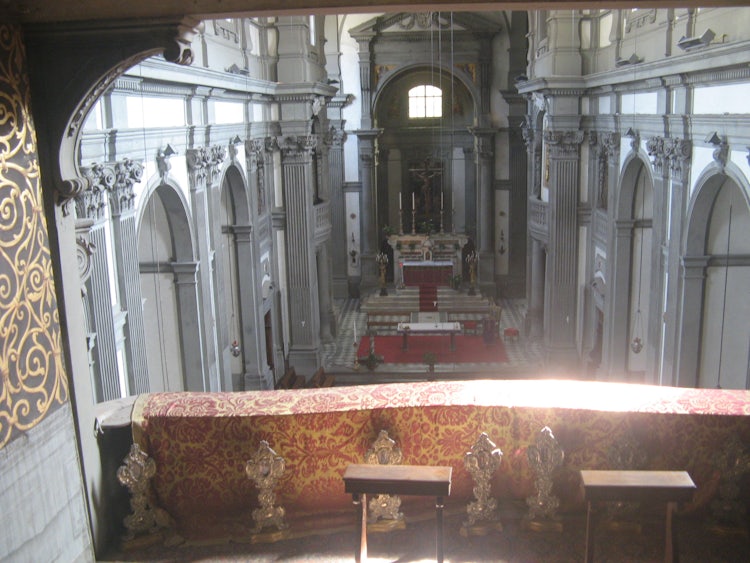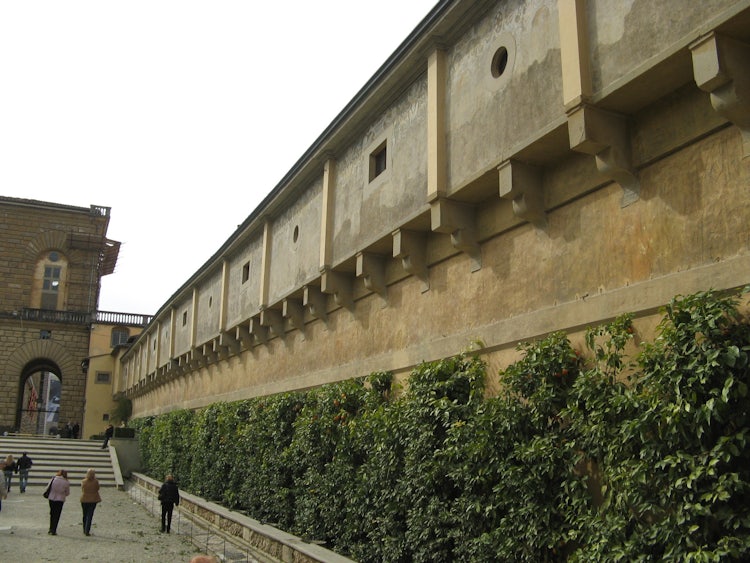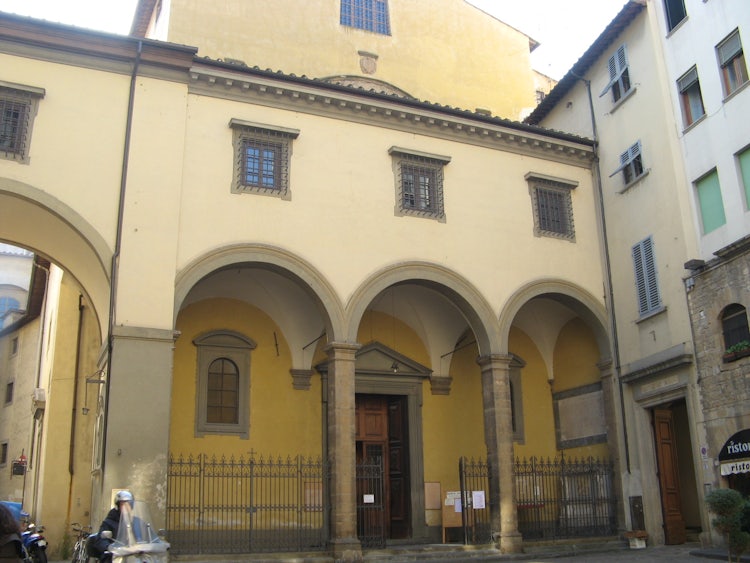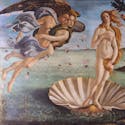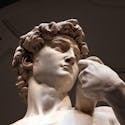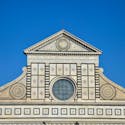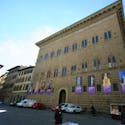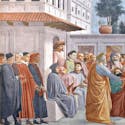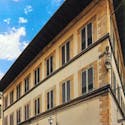The Vasari Corridor is currently closed for renovations.
Plans are for its reopening to the public in 2021. Read the latest news on our blog.
The Vasari Corridor is a kilometer long passageway that connects the Uffizi Gallery to the Pitti Palace. Today, the corridor still connects the two buildings but it is set up as a small museum separate from the famous Uffizi Gallery.
The entrance to the Corridor is located on the first floor within the Uffizi Gallery behind an unmarked door. It is likely that most visitors that crowd the Uffizi everyday don't even know that behind that featureless door stands a great treasure.
Once you've entered the Vasari Corridor it looks like have stepped onto another dimension since the atmosphere is quiet and silent, almost unreal and completely different from the rest of the Gallery.
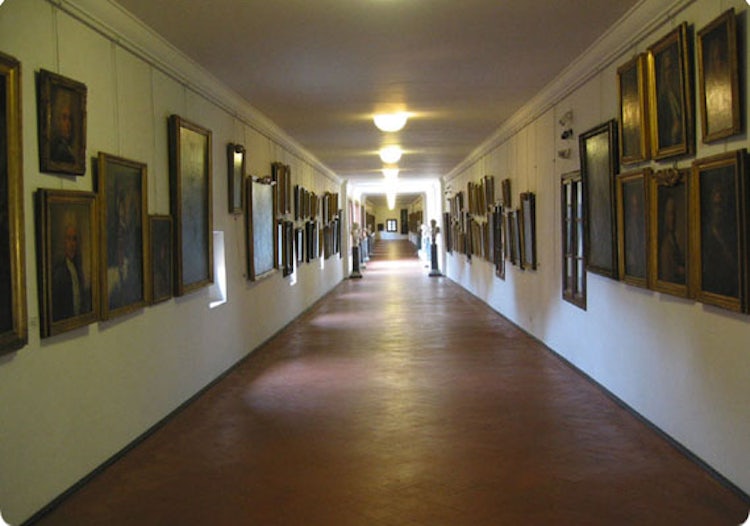
Works are still displayed according to guidelines issued in 1973 by a past director of the Uffizi Gallery. The collection of artwork displayed along the Corridor's walls are mostly works from the 16th and 17th centuries as well as a special and unique collection of artists' self-portraits, including works from Andrea del Sarto to Chagall. The collection is one of the most complete in all Europe, first started by Cardinal Leopoldo de' Medici in the 17th century. Many paintings and self-portraits that are a part of the collection are actually not on display for lack of space along the corridor's walls.
After you've taken just a few steps into the magical atmosphere of the Corridor this atmosphere is interrupted, even if just for a few meters, as you reach the area that was heavily damaged by a terrorist attack commissioned by the Italian mafia in 1993. During the night of May 26, 1993 a car full of explosive was set off next to the Torre dei Pulci, located between via Lambertesca and via de' Georgofili, and 5 people died. Many others were injured and several houses were heavily damaged, including this section of the Uffizi Gallery and the Vasari Corridor. In the Corridor, several artworks were destroyed by the explosion. These paintings, even if hopelessly damaged, have been pieced back together and placed back on their original spot to serve as a reminder of the horrible attack.
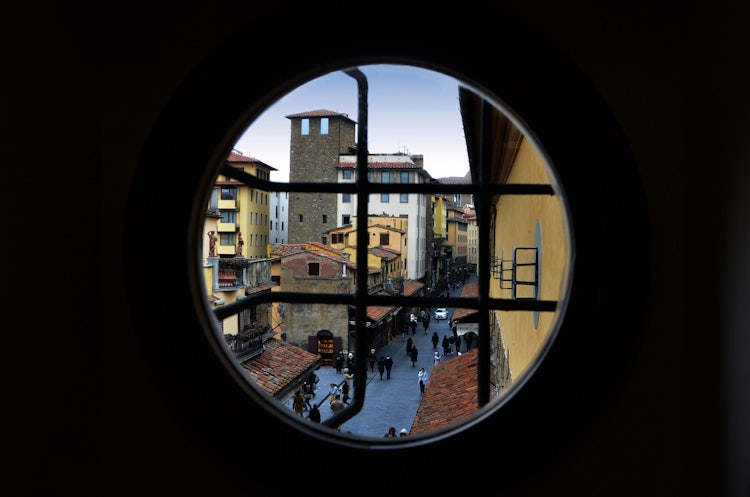
Passing over this part of the Corridor which reminds us of this important yet sad piece of Florence's history, youre once again brought back into its magical atmosphere.
What impresses one the most of the Vasari Corridor, in addition to the magnificent works of art on display, is the elevated and privileged position that gives you the opportunity to pass through some of the most beautiful areas of Florence's city center, walking over the heads of the people below. Sometimes you feel as if you're spying on the people walking by in the streets, especially as you look down through the small round windows that look out to the Arno river and to the city center. This was actually one of the main initial purposes for the construction of the Corridor for the Medici: the possibility to move freely and safely from their home in Palazzo Pitti to Palazzo Vecchio, the seat of government, passing and observing the people below while remaining unnoticed.
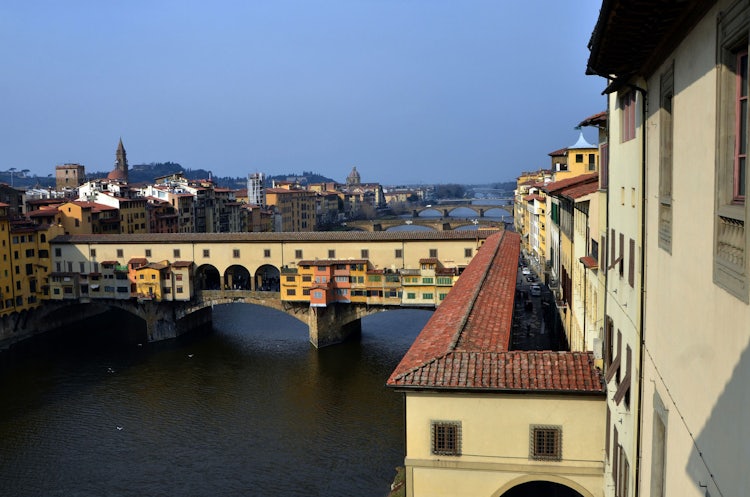
The central part of the Corridor that goes over Ponte Vecchio is the most beautiful panoramic point of view. Exactly halfway over the Ponte Vecchio, Benito Mussolini in 1939 ordered the Corridor's small windows be enlarged so that he could admire the great panorama over the Arno to Ponte Santa Trinita. The windows were to be ready for Adolf Hitler's official visit to Florence: It said he was so impressed by this magnificent panorama over the Ponte Vecchio that he ordered the bridge be saved from German bombing during World War II as they began their retreat from Florence. All the other bridges in Florence were destroyed.
After you've crossed over the Arno, you have a special view of the Church of Santa Felicita. In fact, on the left as you walk toward the Pitti Palace is a large window (today covered with a grate but still permitting a view) onto the balcony that looks directly into the church. From here, the Medici attended Holy Mass from a strategic and privileged point of view.
The current tour ends next to the famous Grotto of Buontalenti inside the Boboli Gardens.
Visits are generally reserved to groups of a set number of people because of the passage's small size.
The History: Why, How and When was the Corridor Built?
The Corridor called Vasari after its architect, was commissioned in 1565 by Cosimo de' Medici to celebrate the wedding of his son Francesco I with Joanna of Austria. The passageway, started in March 1565, was finished in just 5 months on time for the wedding celebrated on December 16th.
Thanks to this elevated passageway the Medici made sure they could move freely and and safely between their residence in Palazzo Pitti to Palazzo Vecchio, the government's headquarters.
Vasari's project included small windows over the streets and the Arno. Up to this point, Ponte Vecchio housed butcher shops since it made it easy for the waste to be thrown into the river. Not a pleasant view... or smell! Since the Corridor was planned over these shops, all the butcher shops were ordered off Ponte Vecchio and were replaced by jewelry shops, shops that still characterize the most famous bridge in Florence.
To build the Corridor several medieval towers located along its way were quite literally crossed. All owners were forced to consent to give the space through their properties for the passageway.... all consented except for the Mannelli family that firmly opposed having the Corridor pass through his home. It seems that Cosimo appreciated the courage the family had to stand up to him and thus permitted them to withhold entrance into their home but the Corridor still needed to connect! Vasari was forced to go AROUND the obstacle - if you look closely from below, you'll see the Corridor does go around the Mannelli tower placed at the end of Ponte Vecchio where it meets Via Bardi and Via de' Guicciardini.
For at least 200 years the Vasari Corridor was used only as a passageway back and forth between the two residences. The route, even if it was just one kilometer, wasn't just done on foot - a small carriage for two passengers took the Medici and guests back and forth. It is also likely that the Corridor had several benches along the way so that it was possible to rest.
When the Lorraine family took over Tuscany and the last will of the the last Medici, Anna Maria Luisa de' Medici, took effect the Uffizi Gallery became private property. The Corridor then lost its function of an exclusive passageway.
Over the centuries some areas were also unfortunately destroyed. In particular, during the bombings of World War II, the Corridor was heavily damaged in some areas. A beautiful bathroom decorated with frescoes and marble was completely destroyed while the end of the passageway that connected Ponte Vecchio to the south bank was bombed to prevent crossing over the river.
The future of the Vasari Corridor
The Vasari Corridor is currently closed for renovations. The project foresees it will open to the public as a passageway between Palazzo Vecchio, the Uffizi Gallery and Palazzo Pitti in 2021. Read the latest news on our blog.
